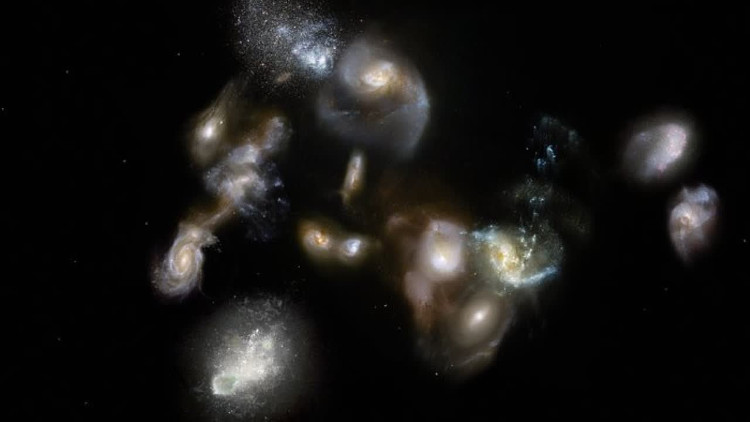Unexpected information about the galaxy merged after the Big Bang
Previously, scientists believed that starburst clusters formed when galaxies collided about 3 billion years after the Big Bang, but now, two groups of international researchers think this collision occurs. much earlier.
By looking at the ancient past of the universe, the researchers found collisions beginning about 1.5 billion years after the Big Bang, much earlier than originally anticipated.

The researchers found collisions beginning about 1.5 billion years after the Big Bang.(Image source: Phys).
Research teams led by Iván Oteo of Edinburgh University and Tim Miller of Yale University and Dalhousie University in Nova Scotia used the Atacama Large Millimeter / submillimeter Array telescope (ALMA) and the Atacama Pathfinder Experiment telescope ( APEX) to study the merging of starburst galaxies.
Starburst galaxies create stars at a rapid rate, producing thousands of stars each year. These galaxies stand out later and lie about a billion light-years away from Earth.
Other observations of ALMA and APEX Observatories show that they are two extremely dense groups of galaxies, a group of 14 galaxies and another galaxy made up of ten galaxies. They are the most active star-forming regions, having seen space change drastically from the beginning and galaxies within them are on the verge of collision.
In addition to finding unexpectedly dense groups of galaxies, researchers are also surprised by the rapid growth of starburst galaxies. Both quantum computers and theoretical models predict that it takes more time to develop into giant objects like today.
- The oldest galaxy formed from 13.55 billion years ago
- Two clusters of galaxies contain hundreds of billions of stars about to collide
- What's interesting about the farthest galaxy in the universe?
- Discover the oldest universe spiral galaxy
- Close up of apocalyptic scenes of two world clusters
- Detecting the supermassive black hole is spraying material
- Candidate of the first galaxy of the universe?
- Detected 23 galaxies formed after 800 million years of Big Bang explosion
- Phu Yen: Unmatched sand flood
- Discover new 'cave' in Phong Nha - Ke Bang National Park
- Discover shocking nearly 500 space explosions in the galaxy core
- Discovered 'evil galaxy' transparent like illusion
 Van Allen's belt and evidence that the Apollo 11 mission to the Moon was myth
Van Allen's belt and evidence that the Apollo 11 mission to the Moon was myth The levels of civilization in the universe (Kardashev scale)
The levels of civilization in the universe (Kardashev scale) Today Mars, the sun and the Earth are aligned
Today Mars, the sun and the Earth are aligned The Amazon owner announced a secret plan to build a space base for thousands of people
The Amazon owner announced a secret plan to build a space base for thousands of people